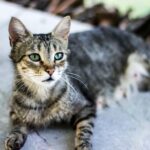Walking your dog should be a joyful experience, a time to bond and explore together. However, for many dog owners, the reality can often be quite different. If your daily strolls feel more like a tug-of-war with your furry friend at the other end of the leash, you’re not alone! Leash pulling is a common issue that can turn peaceful outings into stressful battles. The good news is that with a bit of patience and the right techniques, you can teach your dog to walk politely by your side.
In this article, we’ll explore practical tips and strategies to curb leash pulling, ensuring that each walk is not only manageable but enjoyable for both you and your canine companion. Let’s dive into ways to transform your walks into a delightful adventure!
Table of Contents
- Understanding the Reasons Behind Leash Pulling
- Techniques for Teaching Loose Leash Walking
- Choosing the Right Equipment for Your Dog
- Creating a Positive Walking Experience Together
- Q&A
- To Wrap It Up
Understanding the Reasons Behind Leash Pulling
Leash pulling is a common issue that many dog owners face, often stemming from a dog’s natural instincts and behaviors. Dogs are naturally curious creatures, and when they encounter interesting scents, sounds, or sights, their instinct is to explore. This can lead to them pulling on the leash in excitement or eagerness. Additionally, some dogs may not have learned proper leash manners, often due to inconsistent training or lack of exposure to leash walking as a puppy. Understanding these motivations is crucial to addressing the behavior effectively.
Several factors can contribute to leash pulling, including:
- Frustration: Dogs may feel frustrated if they can’t reach the source of their interest.
- Lack of training: Without proper guidance, dogs may not understand that pulling is undesirable.
- Reinforcement: If pulling often results in reaching the desired object quickly, the dog is likely to repeat the behavior.
By identifying these reasons and recognizing how they affect your dog’s behavior, you can tailor your training approach to make walks more enjoyable for both you and your furry friend.
Techniques for Teaching Loose Leash Walking
When teaching your dog to walk on a loose leash, consistency is key. Start by selecting a comfortable harness or collar that doesn’t cause discomfort, as this will help your dog focus on walking rather than pulling. Begin your training in a low-distraction environment, such as your backyard, and gradually introduce more stimulating surroundings. Use positive reinforcement to reward your dog when it walks beside you without pulling. Celebratory treats, verbal praise, or a favorite toy can be effective motivators. Make sure to maintain a relaxed and calm demeanor, as your dog can sense your emotions and will be more likely to mirror your energy.
Another effective technique involves using directional cues during your walks. If your dog starts to pull, stop walking immediately. This teaches your dog that pulling will not get them where they want to go. Once they return to your side, you can resume walking. Additionally, consider integrating the following practices into your routine:
| Technique | Description |
| Change Direction | When your dog pulls, turn and walk the other way. This keeps them engaged. |
| Frequent Stops | Stop every few steps to keep your dog focused on you instead of their surroundings. |
| Use a Clicker | Click when they are walking nicely and reward them; this helps with timing and clarity. |
Choosing the Right Equipment for Your Dog
When it comes to enhancing your dog’s walking experience, selecting the right equipment is crucial. A well-fitted harness can play a significant role in preventing pulling while ensuring your dog’s comfort. Look for options that distribute pressure evenly across the body, as this minimizes strain and helps reduce the instinct to pull. Additionally, consider using a head collar, which can gently guide their head and redirect attention without causing discomfort. It’s essential to measure your dog correctly and choose products designed specifically for their size and breed.
Here are some key features to look for in walking equipment:
Adjustability: Ensure the harness can be adjusted to fit snugly yet comfortably.
Material: Opt for durable, breathable materials that withstand outdoor conditions.
Reflective Elements: Safety is paramount, so reflective features are beneficial for evening walks.
Leash Type: Consider a no-pull leash with an elastic section to absorb sudden pulls.
To help you visualize some options, here’s a simple table comparing different types of equipment:
| Equipment Type | Benefits | Ideal For |
|---|---|---|
| Standard Collar | Basic restraint, easy to use | Calm, trained dogs |
| Front-Clip Harness | Reduces pulling by redirecting | Dogs prone to pulling |
| Head Collar | Gently controls head direction | Aggressive pullers |
| Reflective Leash | Increases visibility at night | Evening walkers |
Creating a Positive Walking Experience Together
Walking with your dog should be a delightful bonding experience, but if your furry friend is constantly pulling on the leash, it can quickly become frustrating. To cultivate a more enjoyable atmosphere during walks, focus on positive reinforcement techniques. Reward your dog for walking beside you by offering treats, praise, or their favorite toy when they stay close. This approach not only motivates your pet to behave but also strengthens your connection as you both enjoy the outdoors together.
Consistency is key when training your dog to walk politely on a leash. Establish a routine that includes regular practice sessions in various environments, such as quiet parks or bustling streets. Create an engaging walking schedule by incorporating local dog-friendly events or meet-ups, allowing your dog to socialize while learning good leash manners. Consider using a training chart to track progress and celebrate achievements, ensuring that both you and your companion feel accomplished. Here’s a simple table to help you plan effective training sessions:
| Activity | Duration | Location | Notes |
|---|---|---|---|
| Leash Training | 15 minutes | Quiet Park | Use treats for rewards |
| Socialization | 30 minutes | Dog Meet-up | Encourage calm greetings |
| Obstacle Course | 20 minutes | Your Backyard | Incorporate fun commands |
Q&A
Q1: Why does my dog pull on the leash during walks?
A1: Dogs may pull on the leash for several reasons: they might be excited to explore their environment, trying to get to other dogs or people, or simply not trained to walk calmly beside you. Pulling can also stem from a natural instinct to lead the way, especially in breeds that were historically used for herding or hunting.
Q2: How can I train my dog to walk nicely on a leash?
A2: Consistent training is key! Start with basic commands like “heel” and “stay.” Use positive reinforcement, such as treats and praise, when your dog walks calmly beside you. Practice in low-distraction areas before moving to busier locations. Gradually increase the duration and difficulty of your walks to help reinforce good behavior.
Q3: What equipment can help with leash pulling?
A3: Consider using a front-clip harness or a head halter. These tools can help you maintain control without causing discomfort to your dog. They redirect the dog’s attention back to you, making it easier to encourage loose-leash walking. Always ensure any equipment fits your dog properly and is used in a positive manner.
Q4: Should I allow my dog to sniff and explore during walks?
A4: Yes! Allowing your dog to sniff and explore is essential for their mental stimulation and happiness. However, you can incorporate this into your training by using cues like “let’s go” when you want to move forward. This way, you maintain control while still giving your dog opportunities to satisfy their curiosity.
Q5: What should I do if my dog continues to pull despite training?
A5: If your dog struggles with pulling, consider breaking up your walks into shorter, more manageable sessions. Use treats and praise frequently to reward desired behavior. If progress is slow, seeking help from a professional dog trainer can provide personalized strategies tailored to your dog’s specific needs.
Q6: How can I make walks more enjoyable for both my dog and me?
A6: To enhance your walking experience, mix up your routes to keep things interesting. Bring along some toys or treats for breaks during the walk. Allow your dog to interact with other dogs or people, as long as they are well-socialized. Lastly, ensure your own comfort by wearing appropriate shoes and clothing, making the outing enjoyable for you too!
Q7: How long does it generally take to stop leash pulling?
A7: The time it takes to stop leash pulling varies by dog and owner. With consistent training and reinforcement, many dogs show improvement within a few weeks. However, every dog learns at their own pace, so patience and persistence are essential.
Q8: Are there any common mistakes to avoid when training my dog not to pull?
A8: Yes! Some common mistakes include using a choke collar or excessive corrections, which can harm your dog and damage your relationship. Avoid pulling back on the leash, as this may encourage a dog to pull even more. Instead, focus on redirecting their attention to you and rewarding them for staying close.
By incorporating these tips and techniques into your routine, you can transform your walks into enjoyable adventures for both you and your furry friend! Happy walking!
To Wrap It Up
transforming your dog’s walking habits from a tug-of-war to a pleasant stroll is entirely achievable with patience and consistent practice. By implementing the tips we’ve discussed—such as using the right equipment, establishing a consistent training routine, and creating positive associations with walking—both you and your furry friend can enjoy more relaxing outings together. Remember, every dog is unique, so find what works best for your pup and be flexible in your approach. With love, encouragement, and a little perseverance, you’ll find that walking can become one of the most enjoyable parts of your day. Happy walking!
















